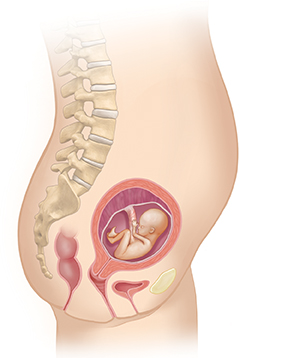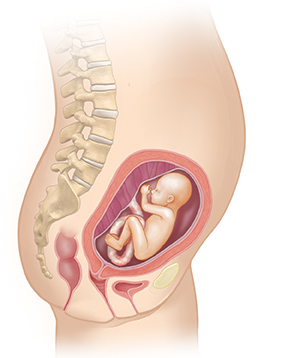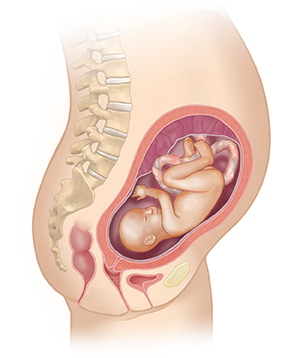Each day, you and your baby are changing and growing together. Here’s a quick look at what’s happening to both of you.
How you are changing
Even when you don’t notice it, your body is adapting to meet the needs of your growing baby. The changes in your body might also affect your moods.
Your body
Your uterus expands as your baby grows. As the weeks go by, you will feel more pressure on your bladder, stomach, and other organs. You may notice some skin color changes on your forehead, nose, or cheeks. Freckles may darken, and moles may grow. You may notice a darker line on your abdomen between your belly button and pubic bone in the midline.
Your moods
The second trimester is often easier than the first. Still, be prepared for mood swings. These are from the increase in hormones made by your body. Hormones are chemicals that affect the way organs work. These mood swings are a normal part of pregnancy.
How your baby is growing
Month 4
Your baby’s heartbeat may be heard with a Doppler (handheld ultrasound device) by 9 to 10 weeks. Eyebrows, eyelashes, and fingernails begin to form.
Month 5
You may feel your baby move. After a growth spurt, your baby nears 10 inches.
Month 6
Your baby’s fingerprints have formed. Your baby weighs about 1 to 2 pounds (0.45 to 0.91 kg) and is about 12 inches long.




